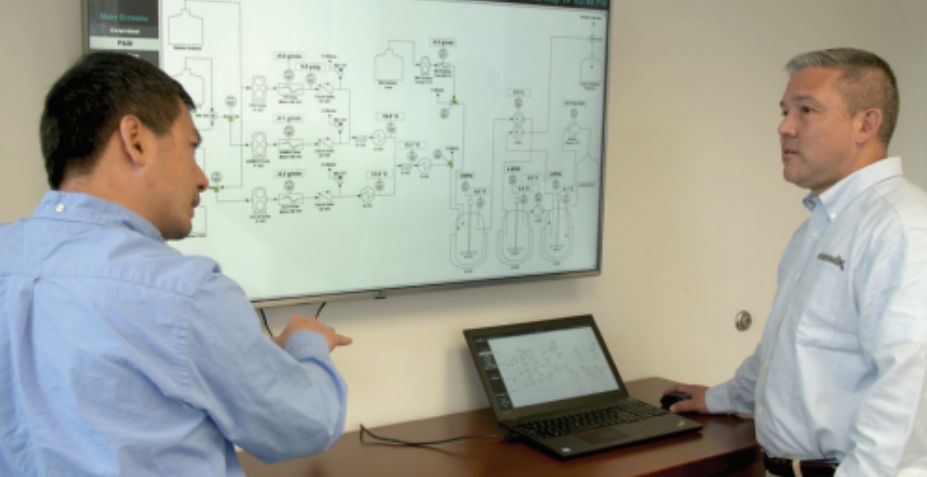For over two decades, I’ve had the privilege of supporting Entegris—a global leader in materials and process solutions—and watching their industrial automation journey unfold firsthand. At Inductive Automation’s ICC event, I had the honor of co-presenting alongside Eileen Souliotis from Entegris to share how our two teams have transformed SCADA infrastructure, one Ignition deployment at a time.
Where It All Began: The First Three Machines
Our story started in 2008 with a small project to upgrade three machines in Bedford, MA. At the time, I quoted RSView32 and Wonderware InTouch—standard choices. But a forward-thinking Entegris engineer asked if I’d ever tried a platform called Inductive Automation. I hadn’t. I downloaded FactoryPMI and FactorySQL, predecessors to Ignition, and within hours, I realized we were looking at something fundamentally different.
With one license, we could control all three machines remotely from a central server in Billerica. Not only that—it was faster than the thick clients. The performance, simplicity, and scalability were eye-opening. That early success sparked what would soon become a global Ignition rollout to support Entegris’ manufacturing plants.
Ignition Spreads Like Fire
As with many digital transformations, momentum builds when results speak for themselves. Ignition expanded from those initial three machines to become the standard across Entegris’ manufacturing sites—including facilities in the U.S., Korea, Japan, and Taiwan.
Today, just in the Billerica plant, we have five servers—each managing over 100 machines. The architecture includes Perspective modules, REST APIs, Sepasoft MES, SSL, Active Directory, and server load balancing. It’s not just SCADA anymore. It’s a full-fledged OT platform.
Why Entegris Standardized on Ignition
The decision to go all-in on Ignition wasn’t just about early success. Here’s why Entegris chose it as their standard:
- Scalability and Centralization
We were able to centralize critical services—backup, restore, database integration—under IT, reducing the burden on automation engineers and improving resilience.
- Seamless Integration
Whether connecting to Allen-Bradley PLCs, Modbus TCP controllers like Watlow, SQL databases, or REST APIs—Ignition handled it all. Even when integrating with other MES platforms or computerized maintenance systems, we found ways to bridge systems via SQL or web services.
- Alarm and Access Management
Critical for 24/7 operations, the system supports advanced alarm notifications, secure remote access, and role-based controls that prevent unauthorized machine interaction from remote clients.
- Cost Efficiency
When compared to traditional HMI hardware like PanelViews, Ignition has consistently delivered major cost savings. For example, supporting 63 machines over 10 years cost ~$189K, versus ~$500K with traditional HMI options.
- Training and Talent
Inductive University’s free training ecosystem allowed us to rapidly skill up engineers. As a Premier Ignition Integrator, every new hire at Neomatrix follows the Core to Gold certification path. Entegris mirrors this approach, with five engineers earning Gold certification in just six weeks.
Visualizing Value: MES with Sepasoft
Some of our most impactful work has come from implementing Sepasoft MES modules. For example, by using downtime analysis charts on long-running roll machines, we identified calibration tool shortages and shift lunch gaps that had been hurting uptime. That visibility avoided a planned $400K capital expense by showing we could get more out of existing assets.
These time-based visualizations aren’t just pretty—they empower operational changes with confidence.
Rolling Out Globally: NeoMatrix as Partner
One question we often hear is: how do you scale support globally? Entegris answered that by leaning on NeoMatrix to support sites in Korea, Japan, and Taiwan. It hasn’t always been easy—timezone juggling is real—but it’s worked. Consistent standards, centralized design, and a trusted system integration partner make global rollouts successful.
At new sites like Colorado, we’re taking things even further: building systems in Perspective from the ground up, leveraging REST APIs, and starting to explore cloud strategies (including Google Cloud) to unify data across sites.
Lessons for SCADA Decision Makers
If you’re considering Ignition for the first time—or thinking about expanding your use—here are a few things I’d urge you to consider:
- Start small, scale fast. Find one impactful use case, build it right and prove the value.
- Invest in training. Use Inductive University and custom training programs like those offered by Neomatrix.
- Partner early with vendors. Push OEMs to adopt Ignition from the start or be prepared to retrofit.
- Standardize for sustainability. Build internal design templates, color palettes, and recipe handling protocols.
- Data wins arguments. Whether it’s staffing lunch shifts or avoiding unnecessary capex, data visualization changes minds.
Looking Ahead: Ignition 8.3 and Beyond
I’m excited about the potential of Ignition 8.3, especially around reducing SQL connector complexity and improving drawing capabilities for HMIs.
Our work with Entegris isn’t done. In fact, it’s accelerating. New greenfield projects like the Colorado facility are proving what’s possible when you take lessons from legacy systems and apply them with today’s tools.
Transformation isn’t about replacing SCADA screens—it’s about shifting how you think, design, and run your operations. With the right platform and the right people, SCADA becomes a catalyst for business value.
About Entegris
Entegris is a global leader in advanced materials and process solutions, serving the semiconductor, life sciences, and other high-tech industries. Founded in 1966, the company is headquartered in Billerica, Massachusetts, just north of Boston. With a rapidly growing global footprint, Entegris employs nearly 10,000 professionals worldwide and generates approximately $3.5 billion in annual revenue. The company holds more than 4,400 patents, underscoring its commitment to innovation and technological leadership.


 June 23, 2025
June 23, 2025 
 March 18, 2022
March 18, 2022 
